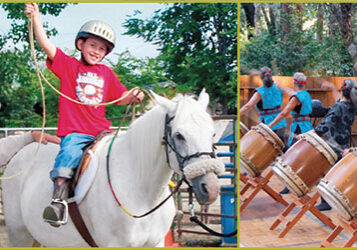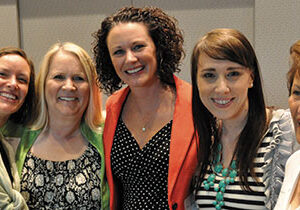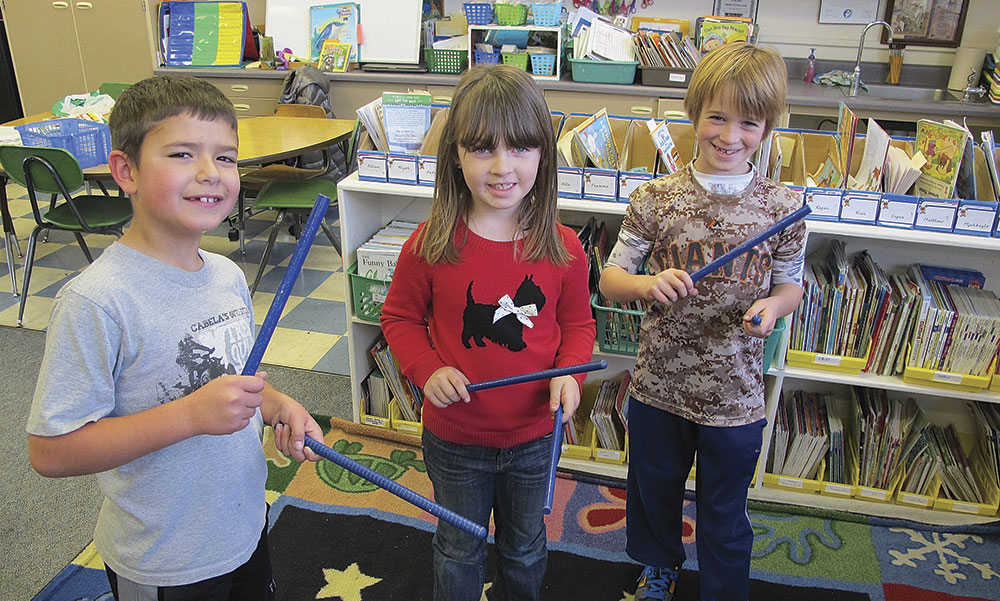Do you remember your child’s first clap? The first time he successfully hit palm-to-palm and smiled at the sound he just created all by himself? For children, learning to make music is exciting, as is spontaneously dancing to songs or learning the first steps to the hokey pokey.
And while you likely know these actions are a normal part of development, you may not realize just how inherent they are. “Rhythm is natural,” says Elizabeth Fitzgerald, a music instructor at Butteville Elementary School in Edgewood. “It’s as natural as breathing.”
At Butteville, art integration is an integral part of the curriculum. The performance and visual art programs – referred to as enrichments – help set Butteville apart from other schools. In fact, Principal Christine Skinner says the parents who bring their kids to Butteville commonly cite these programs in their top three reasons for choosing the school for their offspring.
One of the school’s newest additions is a course that focuses on sight-reading and rhythm for grades 1–3, and it started with a simple observation: Teachers noticed that the kids at assemblies weren’t clapping in rhythm. “Whenever students were asked to clap along to a beat, they were unable to keep time,” notes Lauren Miller, a second grade teacher at Butteville. Both Miller and Cheryl Kirwin, a first grade teacher at Butteville, decided to do some research.
“What we found is that there are hundreds of studies showing the positive effect of music training on reading ability and phonological awareness,” Kirwin explains. Since then, the school’s musical offerings have expanded to now include music theory, rhythm practice and choral music. “We don’t want to ignore the developmental growth that children can achieve through the arts,” Skinner says.
While teacher observation had a lot to do with this new endeavor, including music instruction for children isn’t outside of the box for Butteville. For a long time, grades 4–8 have incorporated a music class into their curricula to support individual needs and bolster academic improvement.
As the third grade classes have participated in the new enrichment over the past several weeks, Lindsay Pappas, a third grade teacher, says she has noticed students benefitting from the myriad of positive benefits linked to music instruction – including enhanced hand-eye coordination, rhythm development and improved reading and memorization skills – but those aren’t the only improvements she’s seen. “I’ve been amazed at watching some of our shyer kids become more confident while singing or playing the simple instruments,” she says. As an added bonus, Pappas says students return to their regular class work refreshed and ready to focus.
While all of this sounds good in theory, how is it in practice? Skinner is happy to report that teachers are watching the assessment data to confirm their suspicions that this exposure is making an affirmative academic impact – and it is. “We don’t just do it because it’s fun, we do it because it’s meaningful,” says Skinner.
Posted in: Community
Comment Policy: All viewpoints are welcome, but comments should remain relevant. Personal attacks, profanity, and aggressive behavior are not allowed. No spam, advertising, or promoting of products/services. Please, only use your real name and limit the amount of links submitted in your comment.
You Might Also Like...

Shasta Regional Community Foundation
Scholarship and Loan Opportunities The fall season is a great time for students to begin researching scholarship opportunities that will help them reach their educational goals. Shasta Regional Community Foundation […]

Grandmaster Azad – Successful Businesses Are Like Successful Families
“When I was starting Azad’s Martial Arts, I made every mistake in the book,” Farshad Azad chuckles. “I didn’t even have money to pay rent for the building; I had […]

The Women’s Fund: Mobilizing Women in the Redding, CA Area Through Strategic Philanthropy
Hatched in 2009 during the depths of the nationwide financial crisis, The Women’s Fund of Redding probably should have failed. After all, how could a philanthropic organization take flight when […]
The Greenie Awards – Honoring Students Working Towards A Sustainable Future
Presented annually at the This Way to Sustainability Conference, the “Greenie Awards” honor students participating in programs that encourage youthful leadership in creating a sustainable future. The awards recognize bright […]


